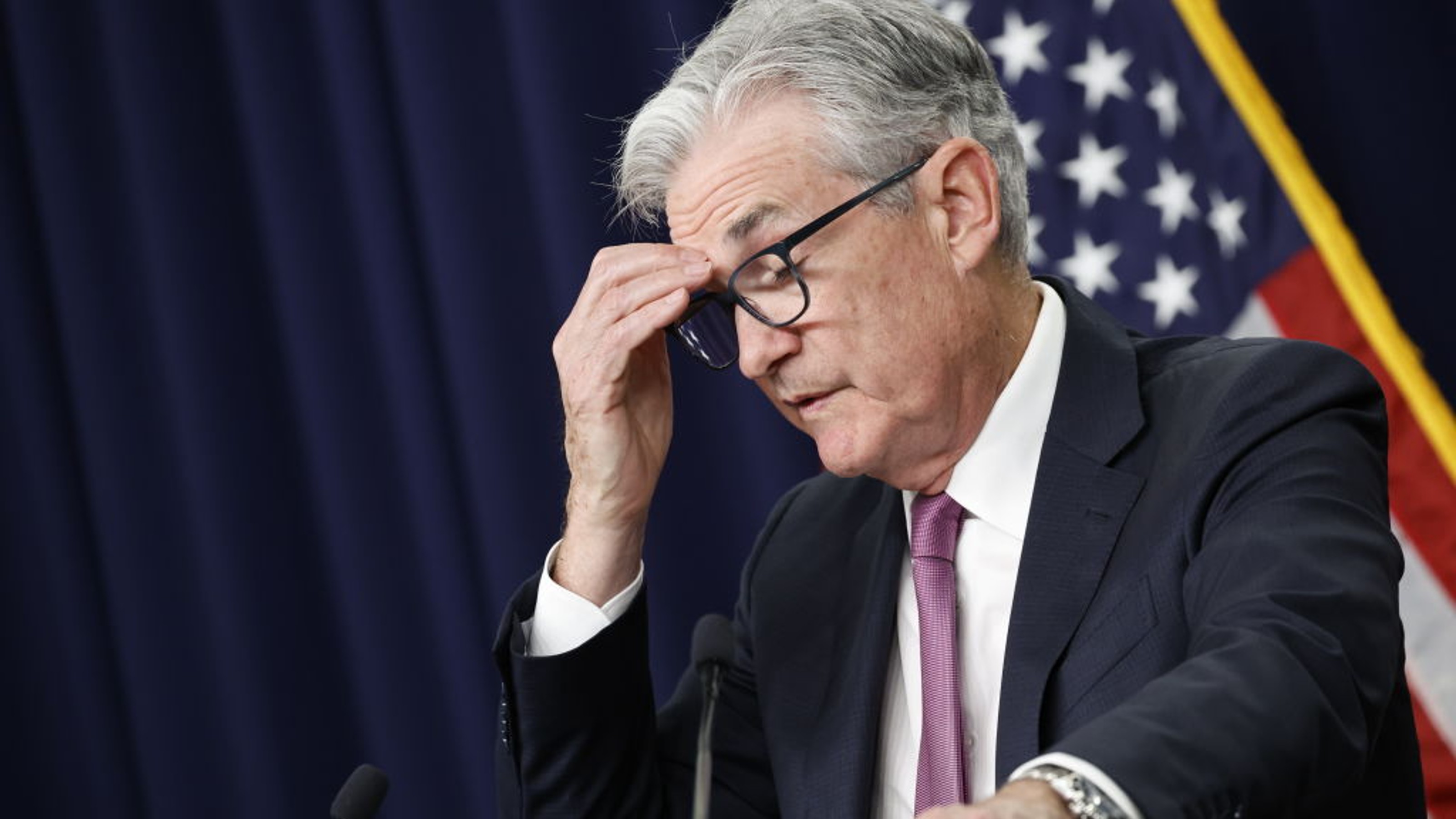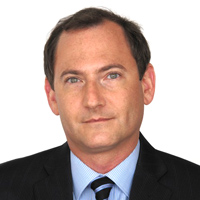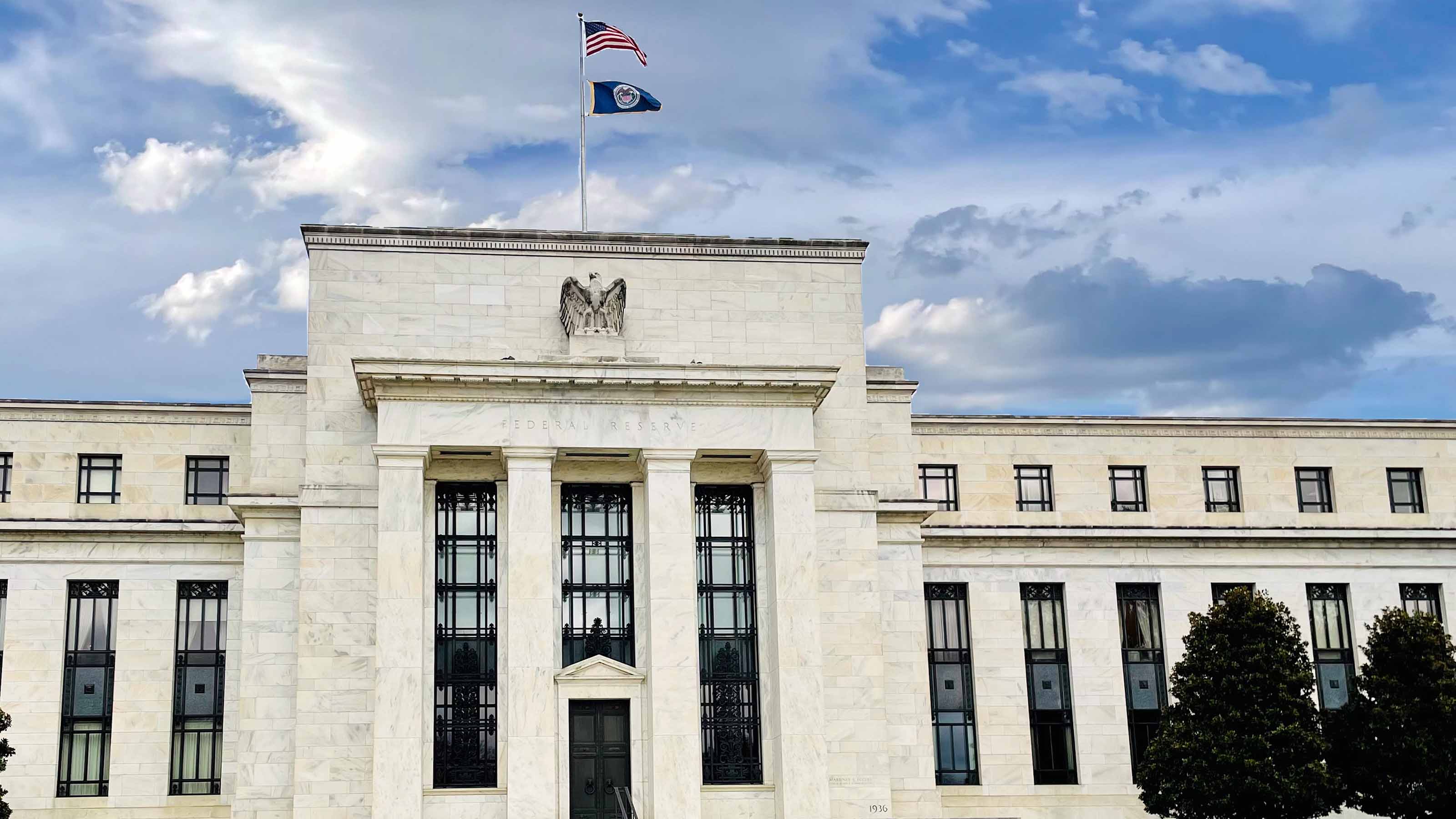When Is the Next Fed Meeting?
The FOMC is expected to keep interest rates unchanged at the next Fed meeting.


"When is the next Fed meeting?" is a question that hasn't weighed this heavily on anxious investors' minds in probably four decades.
Which is fair enough, really. The worst bout of inflation to hit the U.S. economy in 40 years was close to the central bank's long-term target when trade uncertainty once again raised the threat of rising prices.
The Federal Reserve brought borrowing costs down from a 23-year high in September 2024, slashing interest rates by a surprising half-percentage point. The Federal Open Market Committee (FOMC) then followed up in November and December by cutting the short-term federal funds rate by 25 basis points (bps), or 0.25%, at each meeting with the target range currently at 4.25% to 4.50%.

Sign up for Kiplinger’s Free E-Newsletters
Profit and prosper with the best of expert advice on investing, taxes, retirement, personal finance and more - straight to your e-mail.
Profit and prosper with the best of expert advice - straight to your e-mail.
That said, the change in the political landscape complicates the central bank's calculus, as inflationary pressures could resurface under new administration policies. That's a problem, because the Fed has a dual mandate. In addition to stable prices, the central bank is supposed to support maximum employment.
The question now is centered on what the Fed will do this year and beyond. As always, the regularly scheduled release of the Summary of Economic Projections (SEP), also known as the dot plot, will come under intense scrutiny.
"The March FOMC meeting will likely be all about policy uncertainty," writes the BofA Securities U.S. economics team. "The Fed will almost certainly stay on hold, emphasizing patience over panic. Markets could interpret the Fed's message as hawkish because they are focused on downside risks to activity. But in our view, the 'Powell put' is not forthcoming. The dot plot should still show two cuts in '25 and '26."
That view comports with rising-if-mixed recession odds. Economists as a group now forecast a 40% chance of recession in the next year, up from 30% at the beginning of 2025. For what it's worth, the New York Fed's yield-curve model gives a 27% probability to the U.S. entering a recession over the next 12 months, up from 29% at the end of 2024.
The bottom line? When you consider the Fed's dual mandate against the backdrop of a mid-cycle economic expansion (easing inflation, slackening in the labor market), it kind of makes sense that folks are obsessed with the question of "when is the next Fed meeting?"
The fact that lower interest rates today equal higher returns for equities tomorrow also makes rate cuts rather attractive to market participants.
The next Fed meeting: what to expect

For the record, the central bank's rate-setting committee is called the Federal Open Market Committee (FOMC).
As you can see from the FOMC meeting calendar below, the committee meets eight times a year. These meetings last two days and conclude with the FOMC releasing its policy decision at 2 pm Eastern time. The Fed chief then holds a press conference at 2:30 pm. (Pro tip: as closely scrutinized as the Fed statement might be, market participants are usually even more keen on what the Fed chair has to say in the press conference.)
As for the next Fed meeting, it will begin on March 18 and conclude with a policy statement on March 19 at 2 pm Eastern. A pause is by far and away the betting favorite.
As of March 17, interest rate traders assigned a 99% probability to the FOMC keeping the short-term federal funds rate at a target range of 4.25% to 4.50%, according to CME Group's FedWatch Tool. July remains the betting favorite for the next cut, with a 59% chance of a quarter-point cut.
For those wondering "when is the next Fed meeting?," have a look at the schedule, courtesy of the FOMC, below.
January 28 to 29 |
March 18 to 19 |
May 6 to 7 |
June 17 to 18 |
July 29 to 30 |
September 16 to 17 |
October 28 to 29 |
December 9 to 10 |
Related Content
Get Kiplinger Today newsletter — free
Profit and prosper with the best of Kiplinger's advice on investing, taxes, retirement, personal finance and much more. Delivered daily. Enter your email in the box and click Sign Me Up.

Dan Burrows is Kiplinger's senior investing writer, having joined the august publication full time in 2016.
A long-time financial journalist, Dan is a veteran of MarketWatch, CBS MoneyWatch, SmartMoney, InvestorPlace, DailyFinance and other tier 1 national publications. He has written for The Wall Street Journal, Bloomberg and Consumer Reports and his stories have appeared in the New York Daily News, the San Jose Mercury News and Investor's Business Daily, among many other outlets. As a senior writer at AOL's DailyFinance, Dan reported market news from the floor of the New York Stock Exchange.
Once upon a time – before his days as a financial reporter and assistant financial editor at legendary fashion trade paper Women's Wear Daily – Dan worked for Spy magazine, scribbled away at Time Inc. and contributed to Maxim magazine back when lad mags were a thing. He's also written for Esquire magazine's Dubious Achievements Awards.
In his current role at Kiplinger, Dan writes about markets and macroeconomics.
Dan holds a bachelor's degree from Oberlin College and a master's degree from Columbia University.
Disclosure: Dan does not trade individual stocks or securities. He is eternally long the U.S equity market, primarily through tax-advantaged accounts.
-
 6 Stunning Waterfront Homes for Sale Around the US
6 Stunning Waterfront Homes for Sale Around the USFrom private peninsulas to lakes, bayous and beyond, Kiplinger's "Listed" series brings you another selection of dream homes for sale on the waterfront.
By Charlotte Gorbold Published
-
 Six Reasons to Disinherit Someone and How to Do It
Six Reasons to Disinherit Someone and How to Do ItWhether you're navigating a second marriage, dealing with an estranged relative or leaving your assets to charity, there are reasons to disinherit someone. Here's how.
By Donna LeValley Published
-
 Should You Still Wait Until 70 to Claim Social Security?
Should You Still Wait Until 70 to Claim Social Security?Delaying Social Security until age 70 will increase your benefits. But with shortages ahead, and talk of cuts, is there a case for claiming sooner?
By Evan T. Beach, CFP®, AWMA® Published
-
 Retirement Planning for Couples: How to Plan to Be So Happy Together
Retirement Planning for Couples: How to Plan to Be So Happy TogetherPlanning for retirement as a couple is a team sport that takes open communication, thoughtful planning and a solid financial strategy.
By Andrew Rosen, CFP®, CEP Published
-
 Market Turmoil: What History Tells Us About Current Volatility
Market Turmoil: What History Tells Us About Current VolatilityThis up-and-down uncertainty is nerve-racking, but a look back at previous downturns shows that the markets are resilient. Here's how to ride out the turmoil.
By Michael Aloi, CFP® Published
-
 How to Get Apple TV Plus for just $2.99
How to Get Apple TV Plus for just $2.99For a limited time, you can get three months of Apple TV Plus for just $2.99 per month. Here’s how to get the deal.
By Rachael Green Published
-
 Stock Market Today: Stocks Surge to Close a Volatile Week
Stock Market Today: Stocks Surge to Close a Volatile WeekIt was another day with a week's worth of both news and price action, but it ended on a strongly positive note.
By David Dittman Published
-
 Don’t Panic About the “Retail Blackout” – See Which Stores Are Closing (and Which Aren’t) for Easter 2025
Don’t Panic About the “Retail Blackout” – See Which Stores Are Closing (and Which Aren’t) for Easter 2025Dozens of major retailers are planning to close their doors on April 20. Find out which of your go-to stores are on the list.
By Rachael Green Published
-
 Home Insurance: How to Cut Costs Without Losing Coverage
Home Insurance: How to Cut Costs Without Losing CoverageNatural disasters are causing home insurance premiums to soar, but don't risk dropping your coverage completely when there are ways to keep costs down.
By Jared Elson, Investment Adviser Published
-
 Markets Roller Coaster: Resist the Urge to Make Big Changes
Markets Roller Coaster: Resist the Urge to Make Big ChangesYou could do more harm than good if you react emotionally to volatility. Instead, consider tax-loss harvesting, Roth conversions and how to plan for next time.
By Frank J. Legan Published